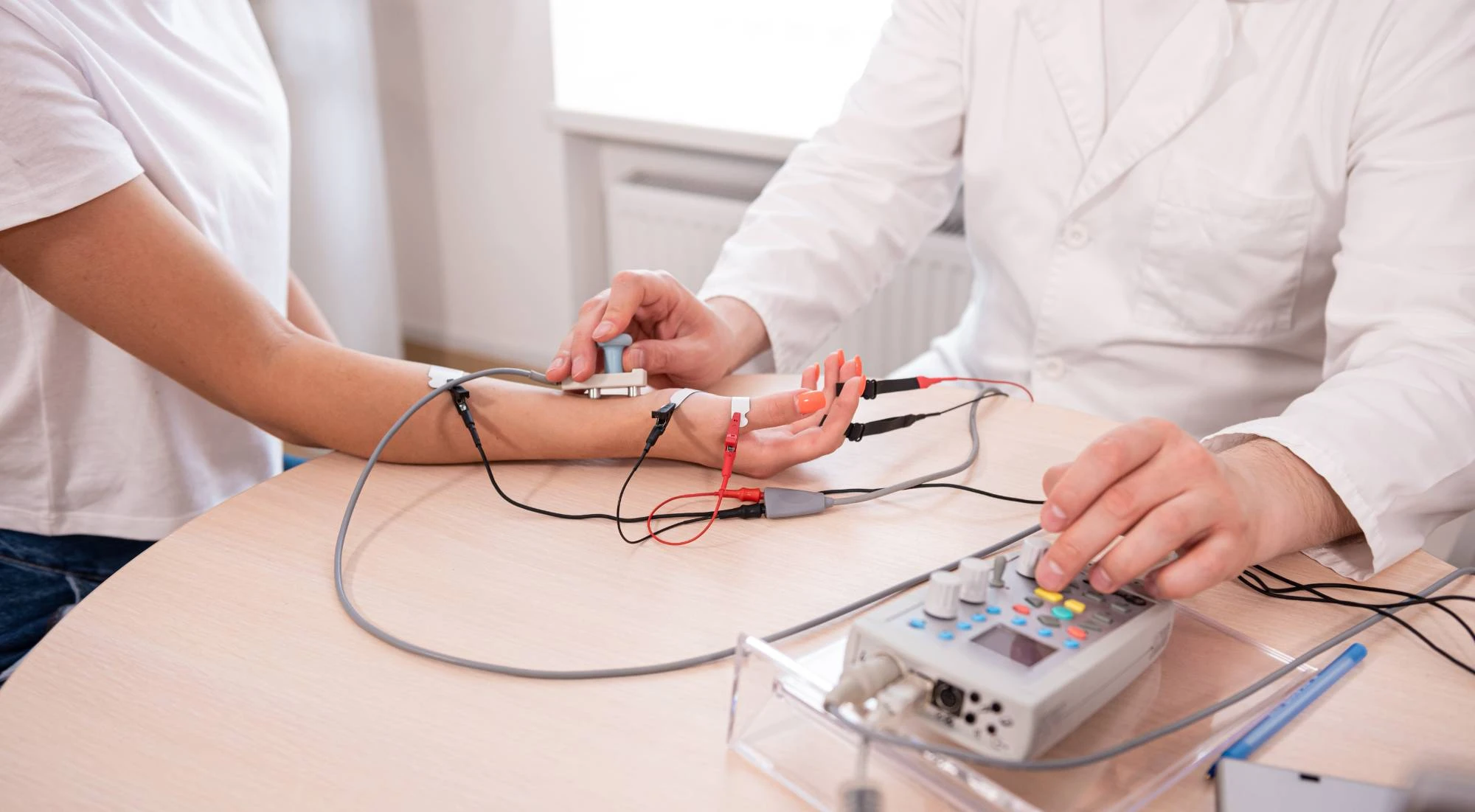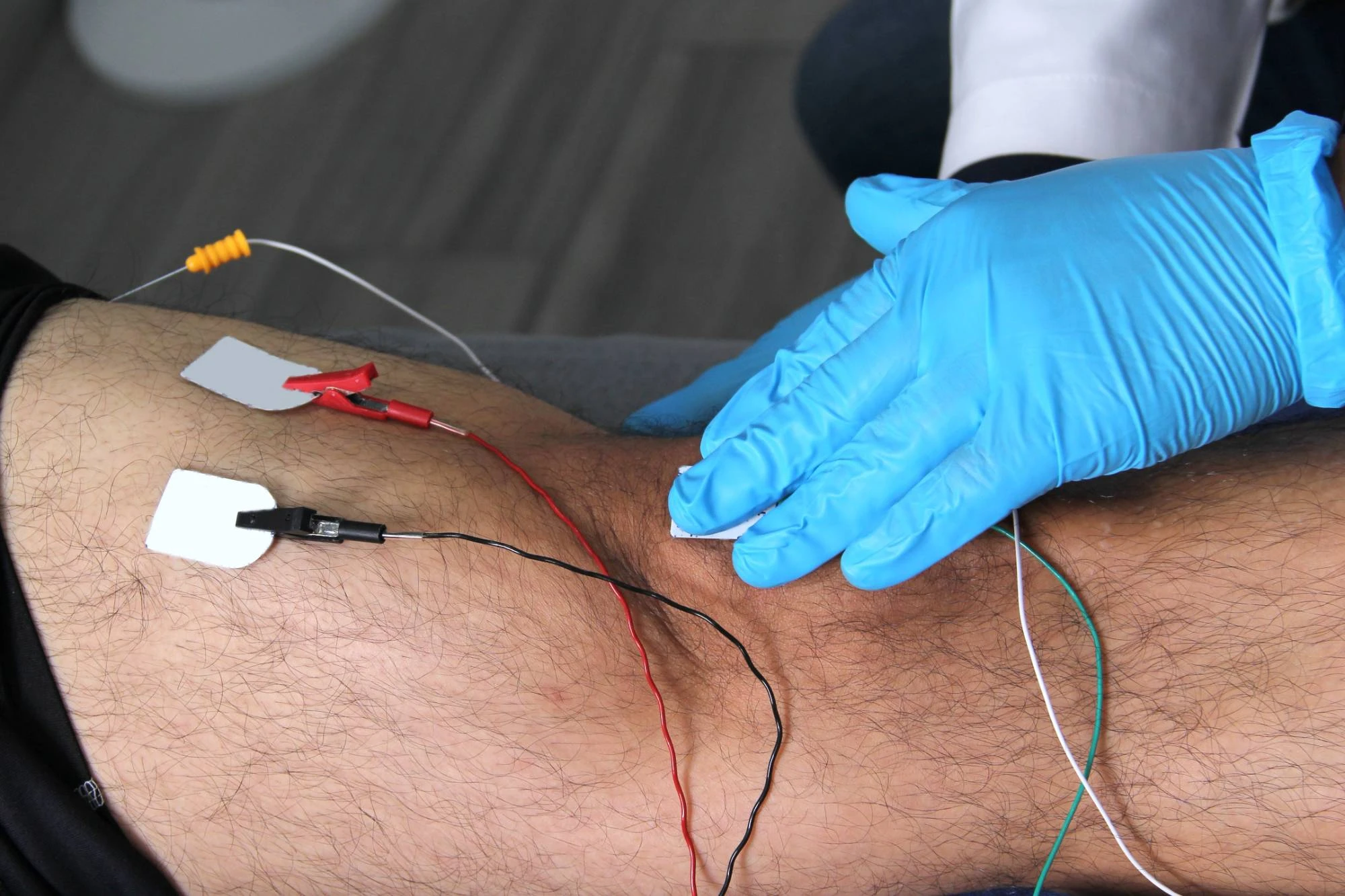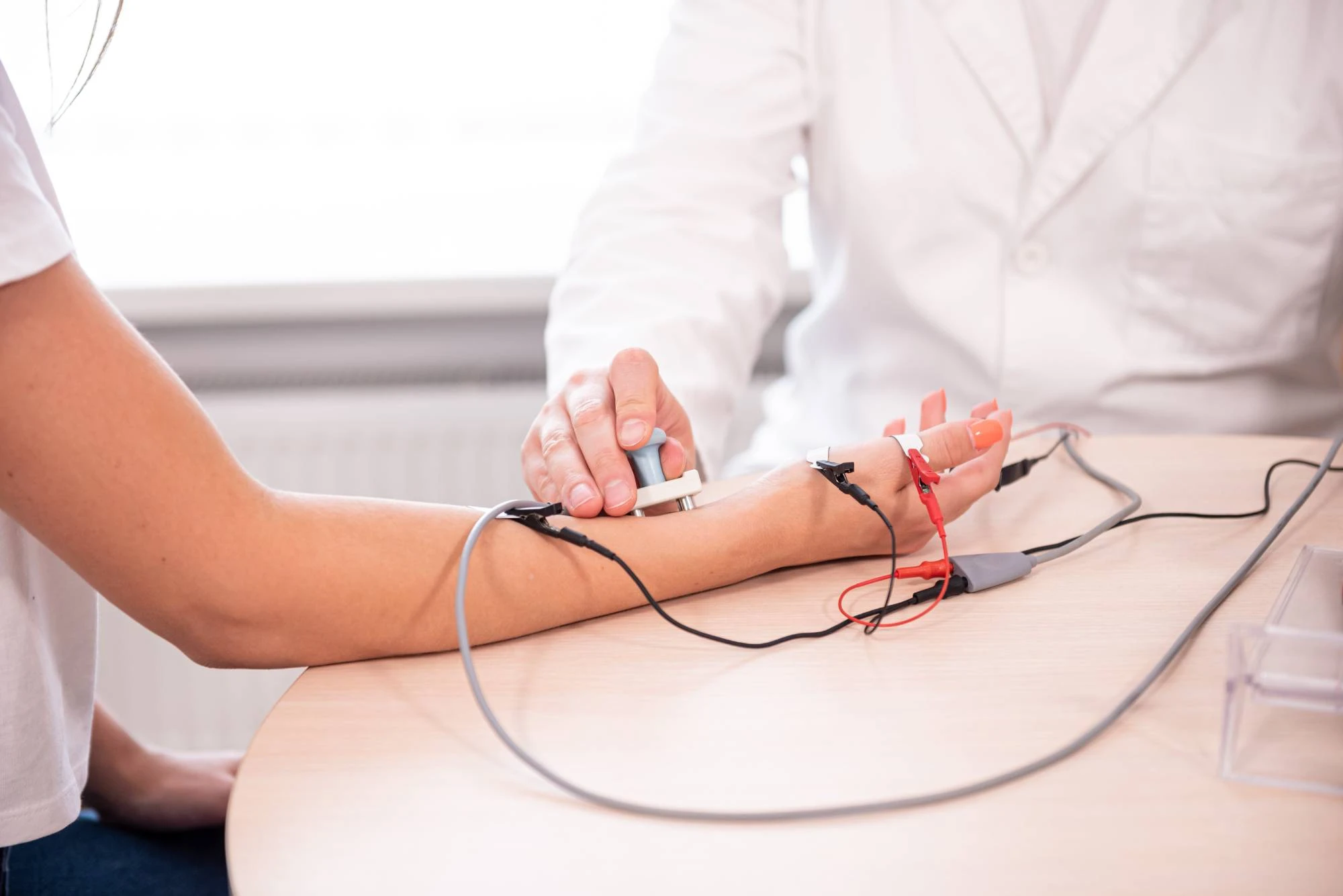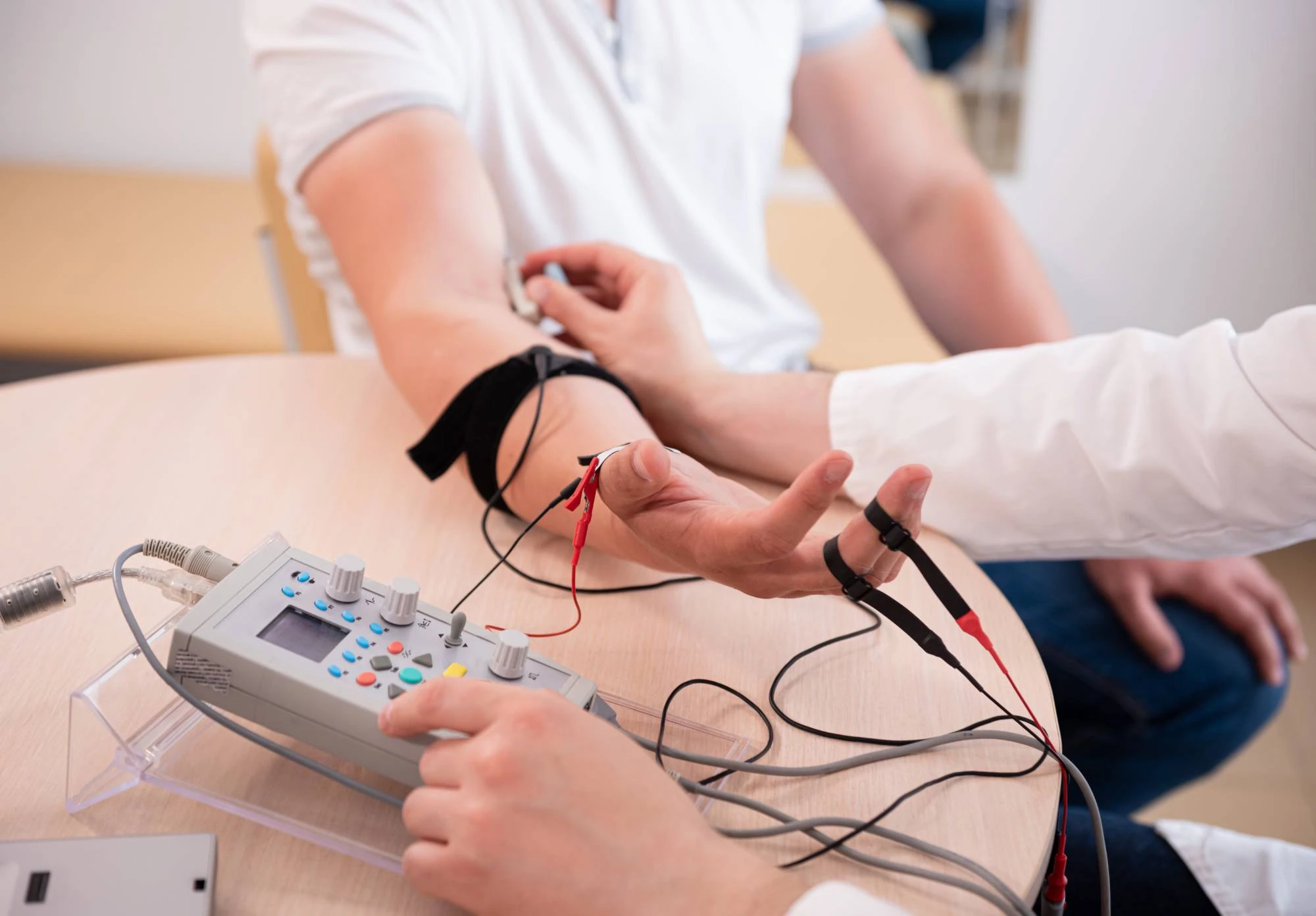Precise EMG testing that identifies exactly what’s causing your numbness, tingling, or muscle weakness.

Reviews

You’ve been dealing with unexplained symptoms long enough. That numbness in your hands, the tingling in your feet, or the muscle weakness that’s making simple tasks difficult – these aren’t things you should have to live with without answers.
EMG testing gives you the precise diagnosis you need. Within minutes, we can identify nerve damage, pinpoint muscle disorders, and determine exactly where the problem is occurring. No more guessing about whether it’s carpal tunnel, a pinched nerve, or something else entirely.
The test results become your roadmap to effective treatment. Instead of trying different approaches and hoping something works, you’ll know exactly what needs to be addressed and how to fix it.
NY Spine Medicine has been serving the Grant City and Staten Island communities for years, specializing in comprehensive nerve and spine diagnostics. Our team includes board-certified neurologists and pain management specialists who understand exactly what you’re going through.
Every day, we see patients who’ve been struggling with the same symptoms you’re experiencing. We know how frustrating it is to live with unexplained nerve problems, and we’re focused on getting you answers quickly and accurately.
Our practice uses advanced EMG equipment and proven testing protocols to ensure reliable results you can trust for making treatment decisions.

The EMG test combines two parts: nerve conduction studies and electromyography. First, small electrical pulses are sent through your nerves to measure how well they’re working. This part feels like a quick, mild shock – uncomfortable for a moment but not painful.
Next, a thin needle electrode is inserted into specific muscles to measure their electrical activity. You’ll be asked to relax the muscle, then contract it gently. The needle insertion feels similar to getting a vaccination, and most patients find it much less uncomfortable than they expected.
The entire process typically takes 30-60 minutes depending on which nerves and muscles need testing. You’ll get your results immediately, along with a clear explanation of what they mean and what your next steps should be.

Ready to get started?
Your EMG testing includes both nerve conduction studies and electromyography testing to give you a complete picture of what’s happening. The nerve conduction study measures how fast and strong electrical signals travel through your nerves, while the electromyography portion evaluates how well your muscles respond to nerve signals.
This comprehensive approach means you won’t need multiple appointments or different tests to get answers. Everything is done in one session, and you’ll leave with a clear understanding of your diagnosis and treatment options.
The testing can identify conditions like carpal tunnel syndrome, peripheral neuropathy, herniated discs affecting nerves, muscle disorders, and other nerve-related problems that might be causing your symptoms.

New York:
Florida:
Support